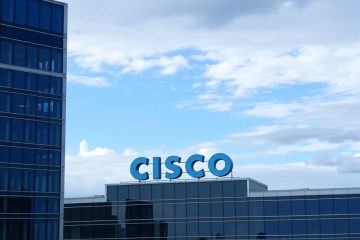Why Dividend-Paying Balanced Funds May Shine in Volatile Market

Disclaimer: This article is for informational purposes only and should not be considered financial advice. Consult a qualified financial advisor before making financial decisions.
In times of economic uncertainty, investors look for stability, income, and long-term growth. One of the best ways to achieve all three is through fully managed balanced dividend-paying mutual funds.
In this blog, we’ll cover:
- What are balanced funds?
- Why choose dividend-paying balanced funds over regular balanced funds?
- Why actively managed funds outperform self-managed ETFs?
- Do mutual fund fees really matter if returns are stronger?
- How dividends help smooth out market fluctuations
If you want an investment strategy that helps protect your wealth, generate passive income, and grow over time, keep reading!
What Are Balanced Funds?
A balanced mutual fund invests in a mix of stocks and bonds, aiming to provide:
- ✔ Stock market growth potential
- ✔ Bond market stability
- ✔ Lower risk than an all-equity portfolio
Balanced funds typically maintain a fixed asset allocation (e.g., 60% stocks, 40% bonds) or dynamically adjust based on market conditions.
Why Invest in Balanced Funds?
- Reduces risk through diversification
- Provides steady, long-term growth
- Less volatility than all-stock funds
- Ideal for investors who prefer a set-it-and-forget-it approach
However, not all balanced funds are equal—those with dividends offer an extra layer of stability.
Why Choose Dividend-Paying Balanced Funds?
The Tree Analogy: Dividends vs. No Dividends
Imagine you own an orchard.
- • If you invest in a fund with no dividends, it’s like chopping down trees and selling the wood whenever you need money. Eventually, you run out of trees.
- • If you invest in a dividend-paying fund, it’s like harvesting fruit while keeping your trees intact. The trees keep producing fruit year after year, ensuring a continuous income stream without depleting your assets.
Dividend-paying funds work the same way—they generate cash flow without forcing you to sell investments.
Key Advantages of Dividend-Paying Balanced Funds
- ✔ Steady income stream even when markets drop
- ✔ Better downside protection—dividend stocks are typically more stable
- ✔ Compounding effect—reinvesting dividends can significantly boost returns
- ✔ Stronger companies—dividend payers are usually financially sound
Bottom Line: A regular balanced fund grows over time, but a dividend-paying balanced fund grows while also paying you along the way.
Why Actively Managed Funds Outperform Self-Managed ETFs
Many investors consider self-managing their portfolio with ETFs, but this often leads to chasing after returns instead of capturing real gains.
Actively Managed Funds Use Strategic Bands for Better Gains and Risk Control
Professional fund managers don’t just react to market swings—they anticipate them.
- ✔ Upper Band (Realizing Gains) – When markets rise significantly, actively managed funds lock in profits before the peak, securing real gains before a correction happens.
- ✔ Lower Band (Cutting Losses) – When markets decline, fund managers cut exposure and rebalance holdings before major losses accumulate, limiting downside risks.
ETFs, on the other hand, simply track the market, meaning you must make all investment decisions yourself. You end up reacting to market movements after they’ve already happened, often buying high and selling low.
Managing ETFs is like chasing a rainbow after the storm has already passed—you’re always one step behind.
Why Choose Actively Managed Balanced Mutual Funds Instead of DIY ETFs?
- Forward-Looking Adjustments: Managers adjust holdings before big market shifts, whereas ETF investors react after the fact.
- Risk Control Bands: Actively managed funds have strategic sell and buy levels, preventing emotional decision-making.
- Broad Diversification: ETFs often focus on single sectors, exposing you to higher volatility.
- Time-Saving: Managing ETFs requires constant monitoring and strategy adjustments.
ETFs work well in stable markets, but actively managed balanced funds provide better risk-adjusted returns during uncertainty.
Fees? Who Cares—Final Returns Matter!
Many investors focus on low fees, but total returns matter more.
- ✔ A 10% return with a 1.5% fee is better than a 6% return with a 0.25% fee.
- ✔ Fund managers actively adjust to avoid major losses—ETFs simply follow the market.
- ✔ Long-term growth and stability outweigh small fee differences.
Smart investors focus on net returns, not just expense ratios.
How Dividend-Paying Balanced Funds Help Weather Market Volatility
Markets fluctuate constantly. When stocks drop, a balanced dividend-paying fund can:
- ✔ Provide steady cash flow through dividends
- ✔ Reduce portfolio volatility
- ✔ Help investors stay invested instead of panic selling
- ✔ Allow reinvestment of dividends to buy more shares at lower prices
In a market crash, growth stocks may fall hard, but dividend-paying companies continue to pay investors.
Final Thoughts: The Smart Move in Uncertain Times
If you’re looking for stability, passive income, and long-term growth, a fully managed balanced dividend-paying mutual fund is a smart choice.
- ✔ Diversified mix of stocks and bonds for lower risk
- ✔ Steady dividend income to ride out market downturns
- ✔ Actively managed to adapt to changing conditions
- ✔ Strategic buying and selling bands for real gains and risk management
- ✔ Long-term wealth-building potential
Don’t just chase low fees—focus on real returns. Investing in a well-managed balanced fund with dividends could be your best defense against market uncertainty.
Want to explore the best dividend-paying balanced funds?



0 Comments